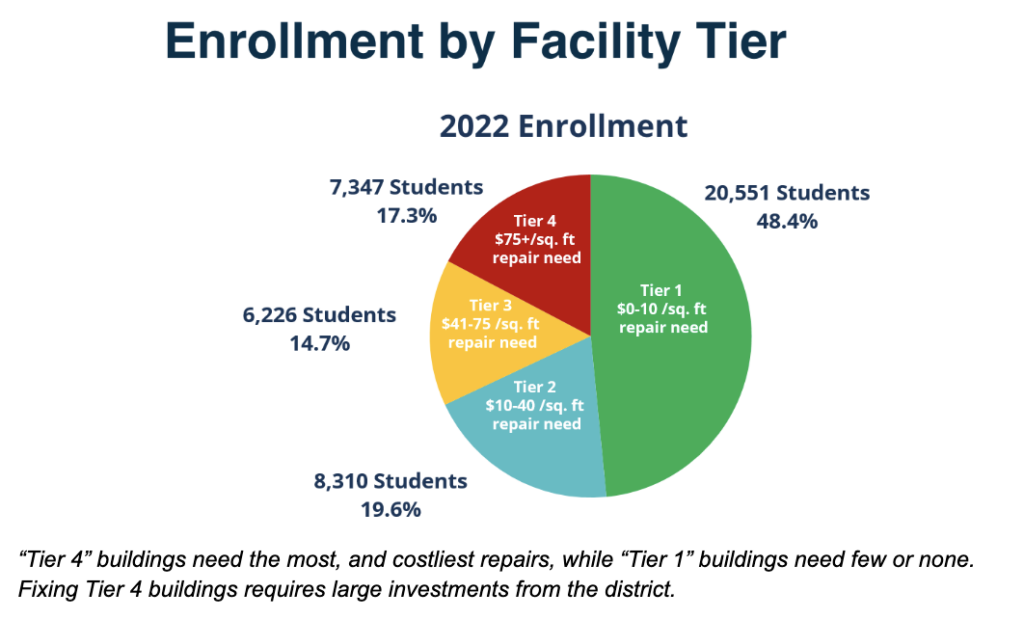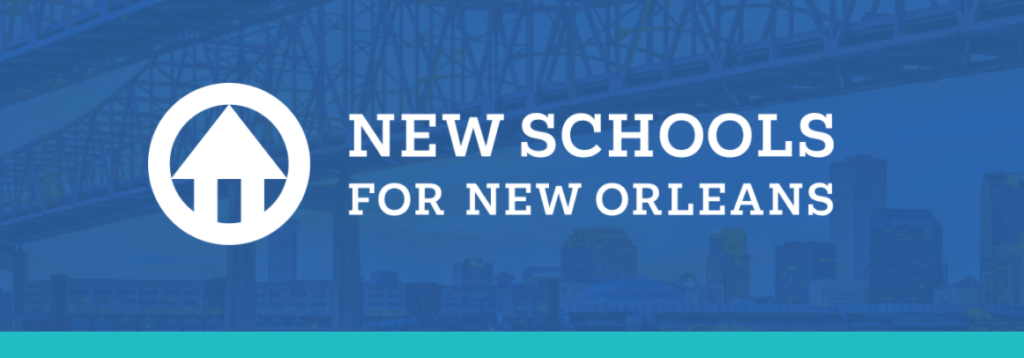This is the fourth installment in our series on public school enrollment in New Orleans. We’ve covered the demographic context, what it means for our school system, and some changes that are already underway. Here, we review the current state of enrollment in the city and provide some updates on more shifts and NSNO’s actions. We’ll return to this series as the enrollment landscape evolves.
Each fall in Louisiana, public schools send the total number of students they’ve enrolled to the Louisiana Department of Education, which uses that number to determine schools’ state and local funding. The state released these numbers publicly in December. At NSNO, because we believe it’s important to continue to update our community as we get new information, we have updated our public, annual Enrollment Landscape Analysis.
The latest numbers were as we expected; in New Orleans, as in many other parts of the state, school enrollment continues to decrease, due to a shrinking city population and lower annual birth rates. Since just 2019, our district’s overall K-12 enrollment has decreased by 3,000 students. Kindergarten enrollment has decreased by nearly 20% since 2014.
Because funding is tied to enrollment, fewer students means schools have fewer resources, which can make it difficult for schools to provide the education students deserve. Importantly, though, New Orleans’ school system is well positioned to respond in moments like these–and recently, some of our schools have taken proactive steps toward sustainability.
An opportunity for consolidation: many schools are under-enrolled, and some buildings need significant repair

At this point, a quarter of schools in our district have enrolled less than 80% of the amount of students they’d hoped to. While many schools are still doing great work with this lower enrollment, and the lower funding that goes with it, they’re often relying on pandemic-era recovery funding from the federal government that will soon dry up.
Lower enrollment poses additional challenges when it comes to finances and school facilities. When school buildings aren’t full, the school still has to pay to heat, cool, and maintain the parts of the buildings that are empty–this uses up valuable resources. And while most students in the city are in buildings that are new, recently renovated, or refurbished, more than 7,000 students learn in low-quality buildings that need significant repairs. Funding for these large repairs comes from local tax dollars designated for these purposes, but this funding is not near enough to cover the cost for all buildings.

To address these issues, some schools in our district will need to make shifts, such as consolidating or closing. These shifts are difficult, but they can open up new opportunities around staffing, resources, and facilities. In some cases, two under-enrolled schools might join into one school, moving students onto the better-quality campus. This both allows more students to learn in an up-to-date space, and saves costs in maintenance and repair of the lower-quality building. It also benefits schools in terms of staffing. Because of a nationwide teacher recruitment crisis, many schools haven’t been able to hire the number of excellent teachers they need. Combining schools provides an opportunity to have a full team of strong educators, too.
Schools take proactive action
The unique structure of New Orleans’ public school system has allowed schools and networks to respond swiftly and creatively to the enrollment decline. In late 2022, the charter network InspireNOLA decided to merge two of its K-8 schools, Pierre Capdau Charter School and 42 Charter School, into one school at Capdau’s recently-renovated campus.

In early February, ARISE Schools and Crescent City Schools announced another transition. Akili Academy, run by Crescent City Schools, and Mildred Osborne School, run by ARISE, will now merge into a single school on the Mildred Osborne campus. It will be run by Crescent City Schools as Mildred Osborne Charter School. This will result in a better balance of students, facilities, and resources at Osborne. By merging two schools together, they will “fill” Osborne more completely, allowing the school to have the funding it needs to provide more opportunities and great educators, and have a sustainable, strong future. This demonstrates powerful problem-solving on the part of ARISE and Crescent City Schools, who came together independently to propose the shift to the district. This kind of collaboration benefits not only these two schools, but all schools across the city.

There’s an upcoming shift on the high school level, too. The student bodies of Rosenwald Collegiate Academy and Walter L. Cohen College Prep will soon be coming together on one campus, as Walter L. Cohen High School, run by Collegiate Academies. Cohen recently got a brand-new, $30 million building, but they are significantly under enrolled; while the building can fit 800 students, there are fewer than 150 enrolled at Cohen today. Rosenwald is also under enrolled. By bringing Rosenwald’s students to Cohen’s campus in the fall, Collegiate joins two strong communities and allows more young people to make use of a phenomenal new space.

With all three of these changes, schools with “empty seats,” or open spots, merged, creating three schools that were better “filled,” or more fully enrolled. These changes removed 1,500 total “empty seats” from across our system. Since schools make their budgets based on the nearly $10,000 in state and local per-pupil funding that comes with each student, having “empty seats” results in a budget gap; they end up with less money, and less students, than they expected. These consolidations, then, reduce a $15 million funding gap across the district in funding schools expected but did not get.
In addition, all of these changes result in students moving into a high-quality building–often, as in the case of Cohen, one that’s brand new. But in these cases, the school buildings that are being merged “out of” are also high-quality. By leaving their campuses, Akili, Rosenwald, and 42 Charter School create the opportunity for NOLA-PS to move other schools that are in low-quality buildings into these high-quality facilities. This will mean even more children have the chance to learn in great facilities, and it also saves the district millions of dollars in repair costs.
When schools in our city consolidate, students at the merged schools don’t need to turn in new applications; they’re automatically enrolled unless they choose to apply elsewhere. But even when these shifts have clear benefits, they’re not easy. School buildings aren’t just buildings; students, families, alumni and educators have built communities and memories in all of these schools. School and network teams and the district are working hard to ease the transition, and NSNO is providing financial support for schools as they shift.
Looking forward
We know that as our population continues to shrink and our enrollment declines, we’ll need to keep making shifts in our system. More schools will need to make changes. In order to help prepare for and facilitate this, the Orleans Parish School Board released a set of draft “District Optimization Policies” at their board meeting on Feb. 7th.
“District optimization” can sound technical, but at its core, it’s about making sure that our district is the best it can possibly be–from our buildings’ capacity to the education offered in it–for our children. One way we care for our students during this time of change is to make sure that we plan thoughtfully in advance. We expect OPSB to discuss and formally approve the policies at their next meeting, on March 23rd. We are confident these policies will help our district adjust in the years to come.
***
NSNO looks forward to continuing working closely with schools and the district to provide data analysis on the enrollment landscape and offer schools grants during their transitions. We will continue to update our community through articles like this one as more developments arise.
